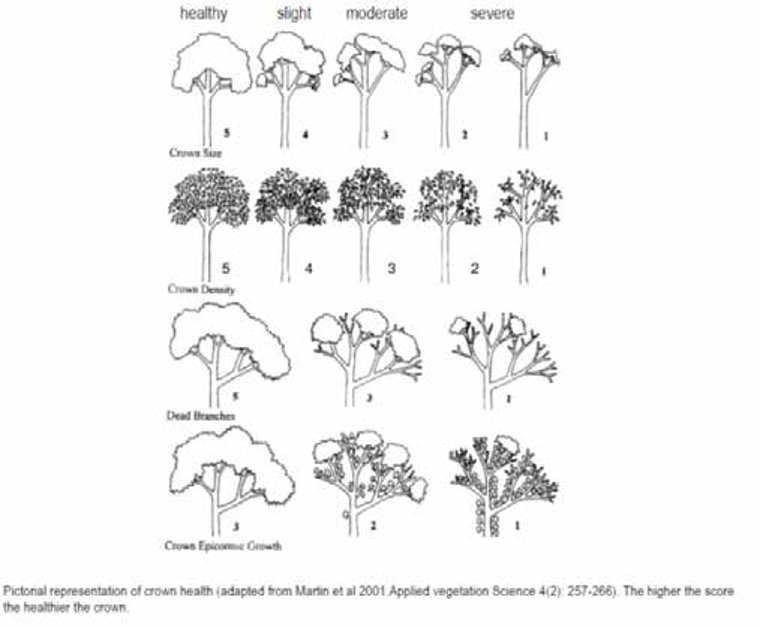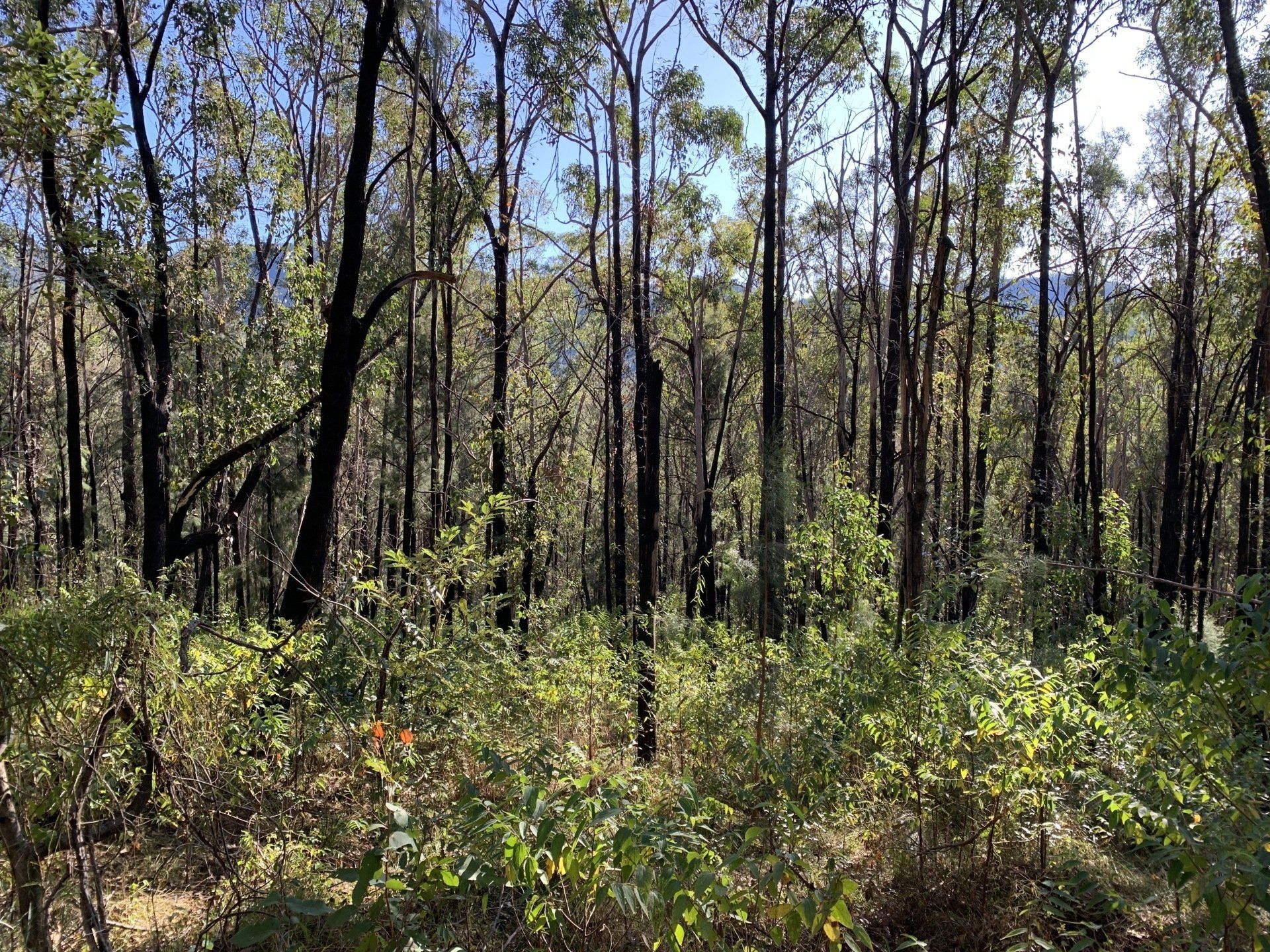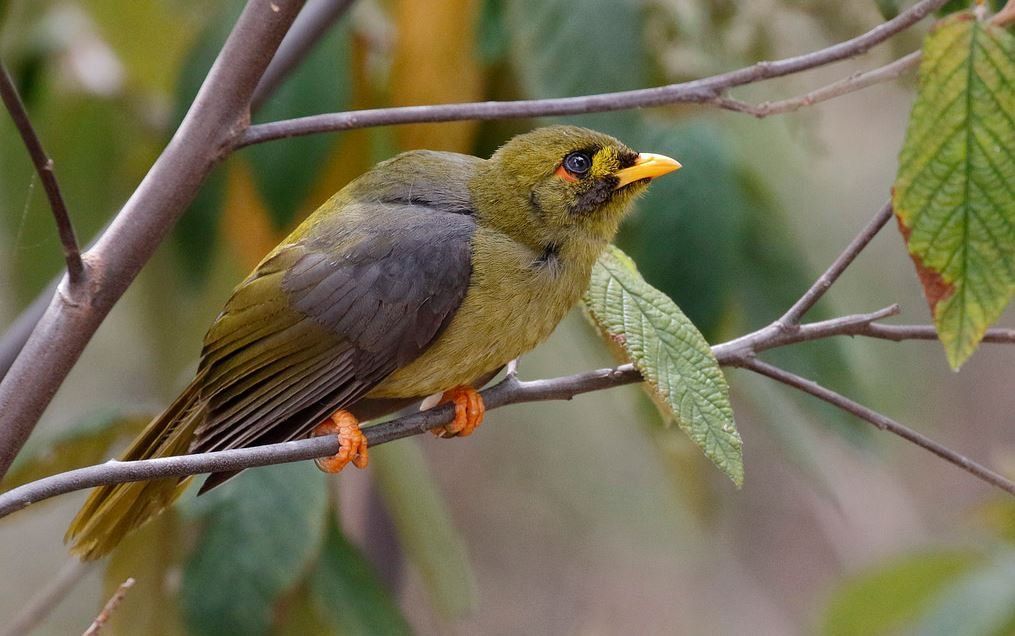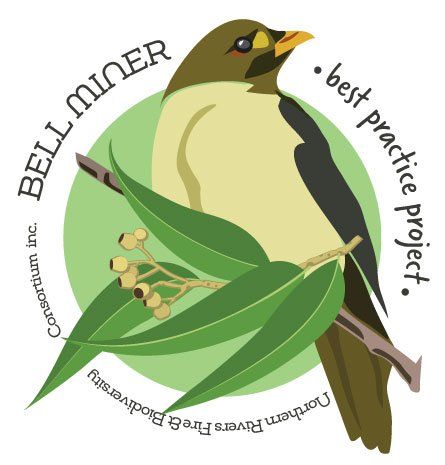Monitoring
Monitoring is essential to establish a baseline of the condition of your management zone and to observe the progress of your work. Effective monitoring programs will ensure that resources and time are not wasted, as you can quickly see which sites are responding better than others. However, it can take several years for the effect of management actions to be seen, so it’s important to keep monitoring and reviewing your progress.
If nothing else, take photos. Its easy to forget just how far you have come since day 1!
Monitoring can be as simple or as complex as you want, but there are two key things to keep an eye on when dealing with BMAD, vegetation condition and bird populations. We recommend monitoring at least once a year, using a 100 metre transect through representative sites. It’s also important to monitor your sites before you carry out any work, so you have baseline data for future comparison.

Prolonged exposure to bell miner colonisation results in persistent damage to leaves from herbivorous insects (psyllids).
Monitor crown condition for all susceptible eucalypt species at the monitoring site.
For each tree being assessed for crown health, identify the species, measure the diameter at breast height (using a DBH tape) and attach a numbered tree tag in an obvious position. This will help to recognise trees with repeated monitoring. Crown health is scored based on a sum of the five attributes. Psyllid monitoring can conducted at the same time as crown health monitoring.
Using a pair of binoculars, assess crown health according to five attributes: crown size and shape, crown foliar density, dead branches, epicormic growth, foliar damage and psyllid load.

Bell miners depend on a particular vegetation structure for habitat
Monitor vegetation structure and diversity using two methods: photo point monitoring and vegetation structure assessments.
It is important to undertake vegetation monitoring prior to, during and after vegetation management interventions, particularly weed control.
Photo point monitoring
At the start of each monitoring transect, take two photographs in each cardinal direction (north, east, south and west), one looking straight out (i.e. forwards) to capture mid-storey and understorey vegetation, and another facing into the canopy. Where possible, take the photos at a time of day that minimises glare.
Vegetation cover monitoring
Monitor vegetation cover from the centre point of a 20 m radius circular plot. Standing in the centre of the plot, visually estimate the percentage cover of each vegetation strata layer of native and exotic species.
Measure canopy cover, canopy weed cover, mid-storey density vegetation including weeds and percentage ground cover. Also note if there is any evidence of native vegetation recruitment.

Understanding the dynamics of bird communities in a BMAD-affected forest is essential to understanding the impact of your BMAD management interventions.
Monitor avifauna (birds) annually and before and after management interventions, particularly weed control. Make note of the following characteristics of bird populations at your sites:
Bell miner colonies
• Is a bell miner colony present (yes/no)
• If a bell miner colony is present, how big is it approximately (how many birds, less than 50, 50-100 or greater than 100 birds).
• Has the bell miner colony vacated the site? If so, when did it leave?
Other birds
• Are there any other bird species present? Yes/no
• Create a species list of birds present or note the number of diffrent bird types
• What layer of the forest are the birds occupying (canopy/mid-storey/understorey/ground)
• What functional group do the birds belong to? (optional)

An understanding of the relative abundance of psyllids at a site is helpful to indicate changes associated with management interventions.
However, psyllid load is not a useful indicator of management intervention efficacy or tree health and should only be used in conjunction with other measures, particularly avifauna surveys and crown health assessment.
When undertaking crown condition monitoring, visually assess and record the psyllid load for each tree. Comparative categories of ‘low’ ‘medium’ and ‘high’ psyllid loads are adequate.
Northern Rivers Fire & Biodiversity Consortium inc.
This project is supported by North Coast Local Land Services, through funding from the
Australian Government’s National Landcare Program and the NSW Department of Planning, Industry and Environment
through funding from the Saving Our Species Program.
